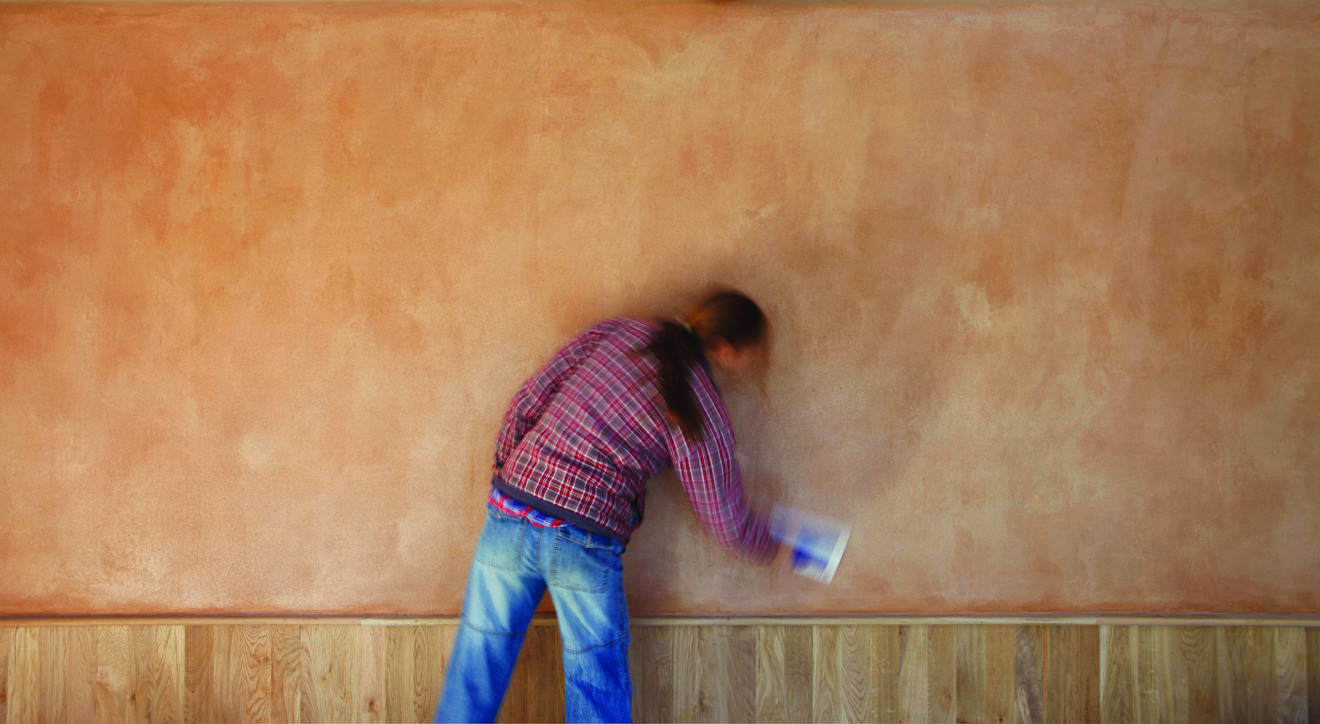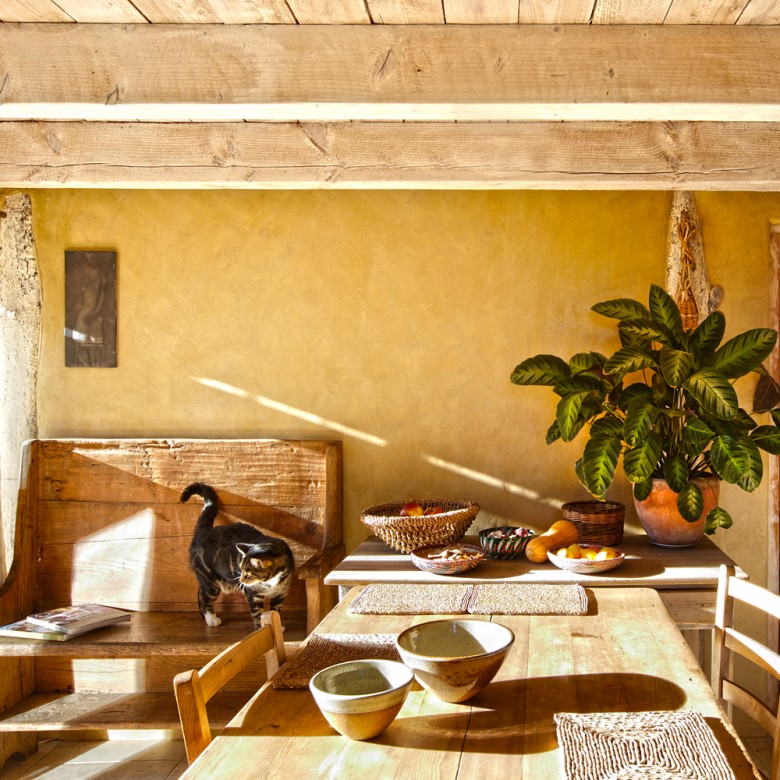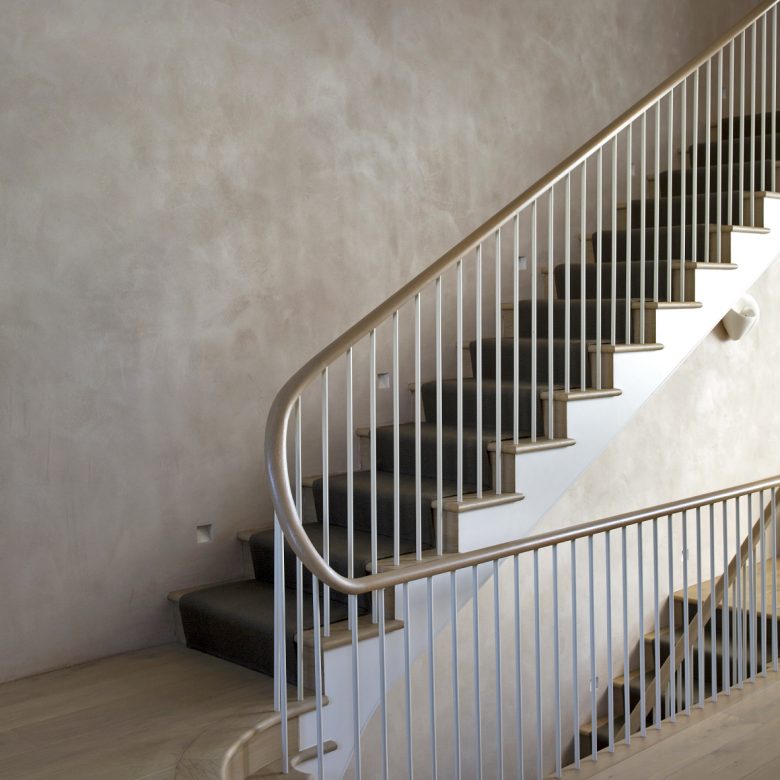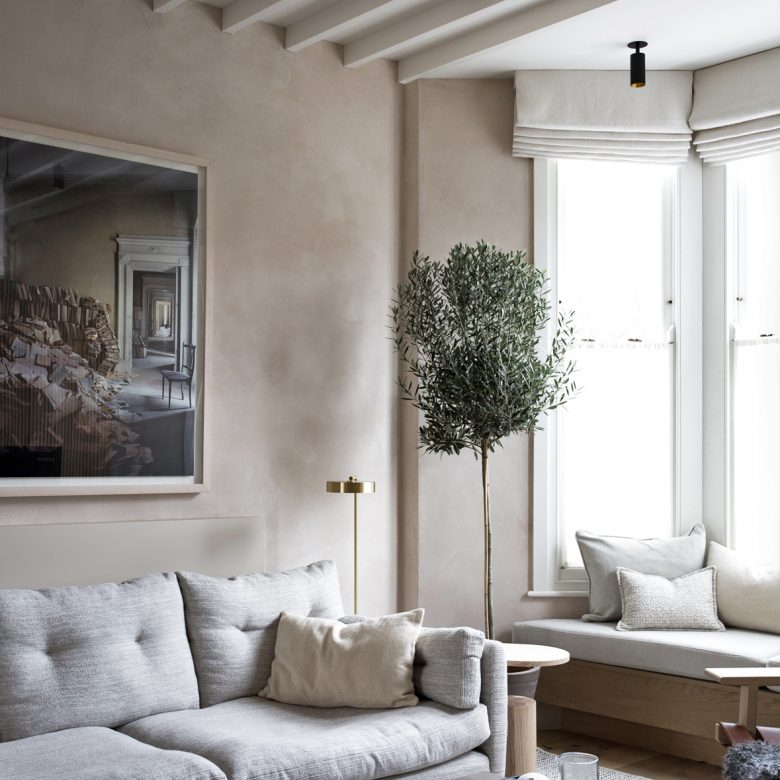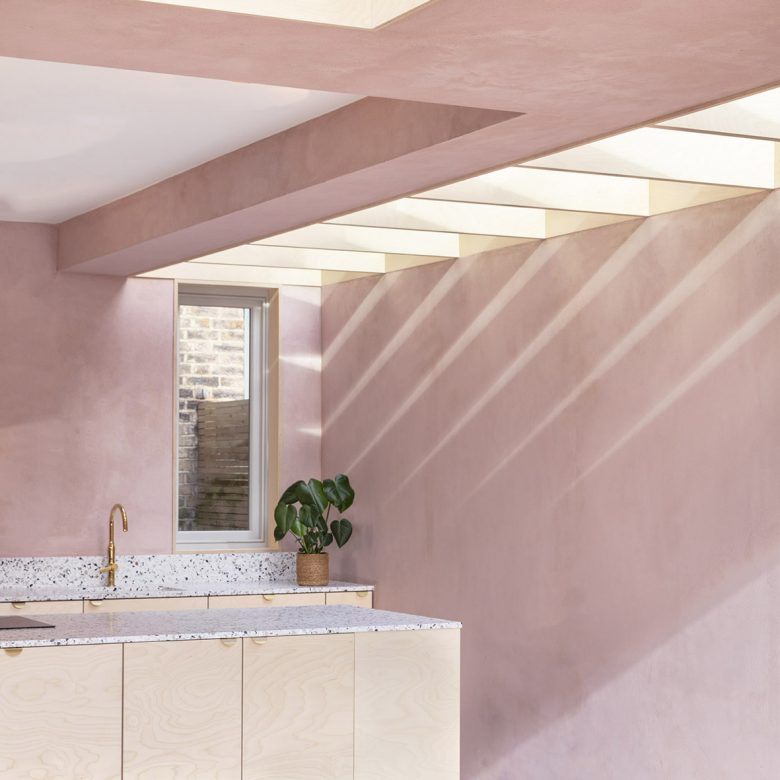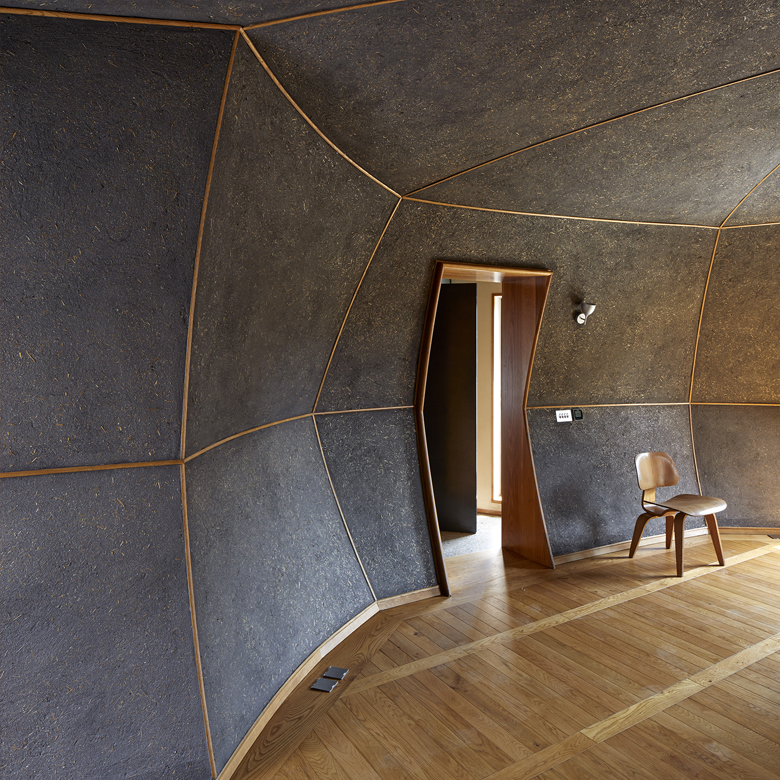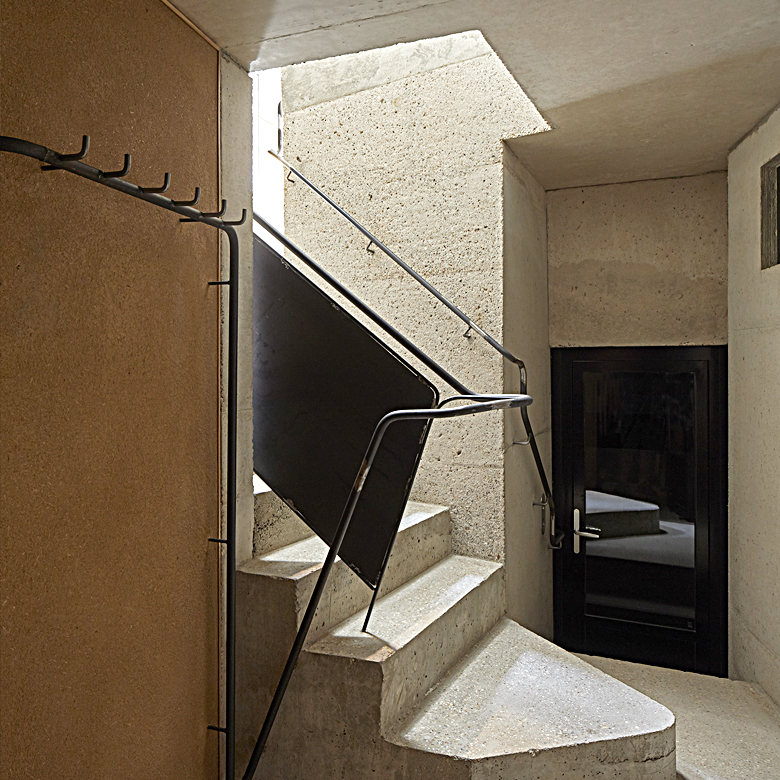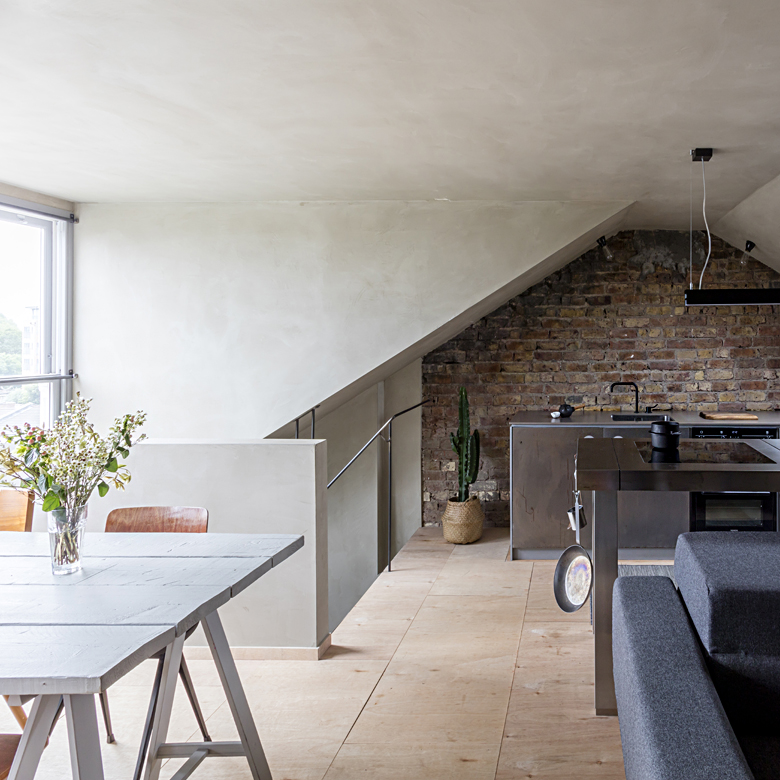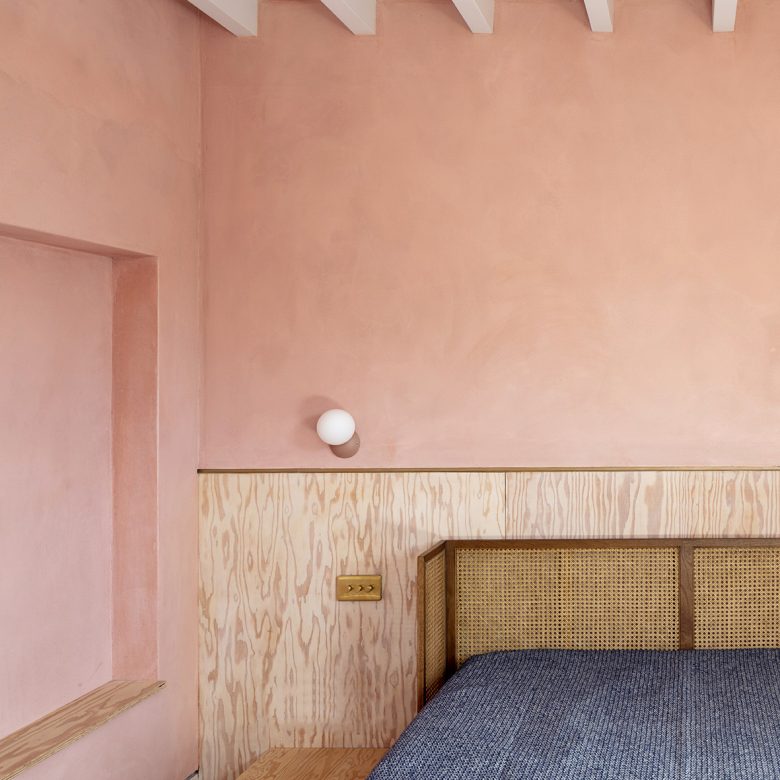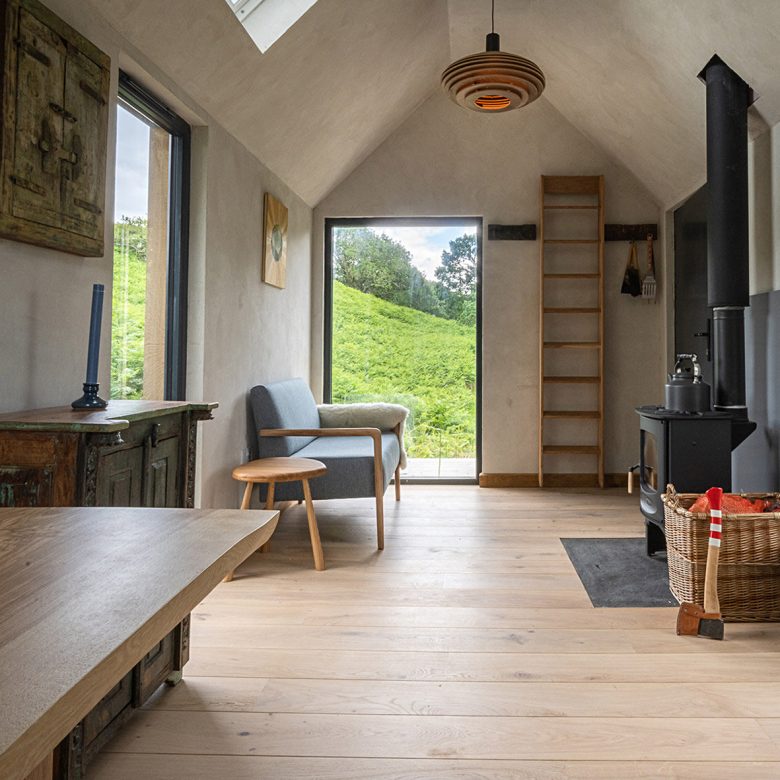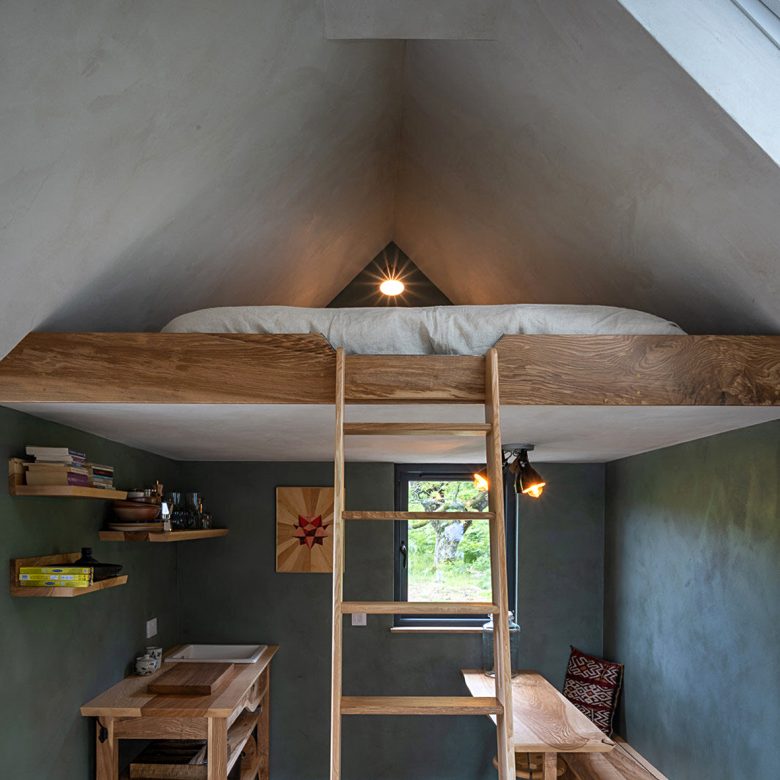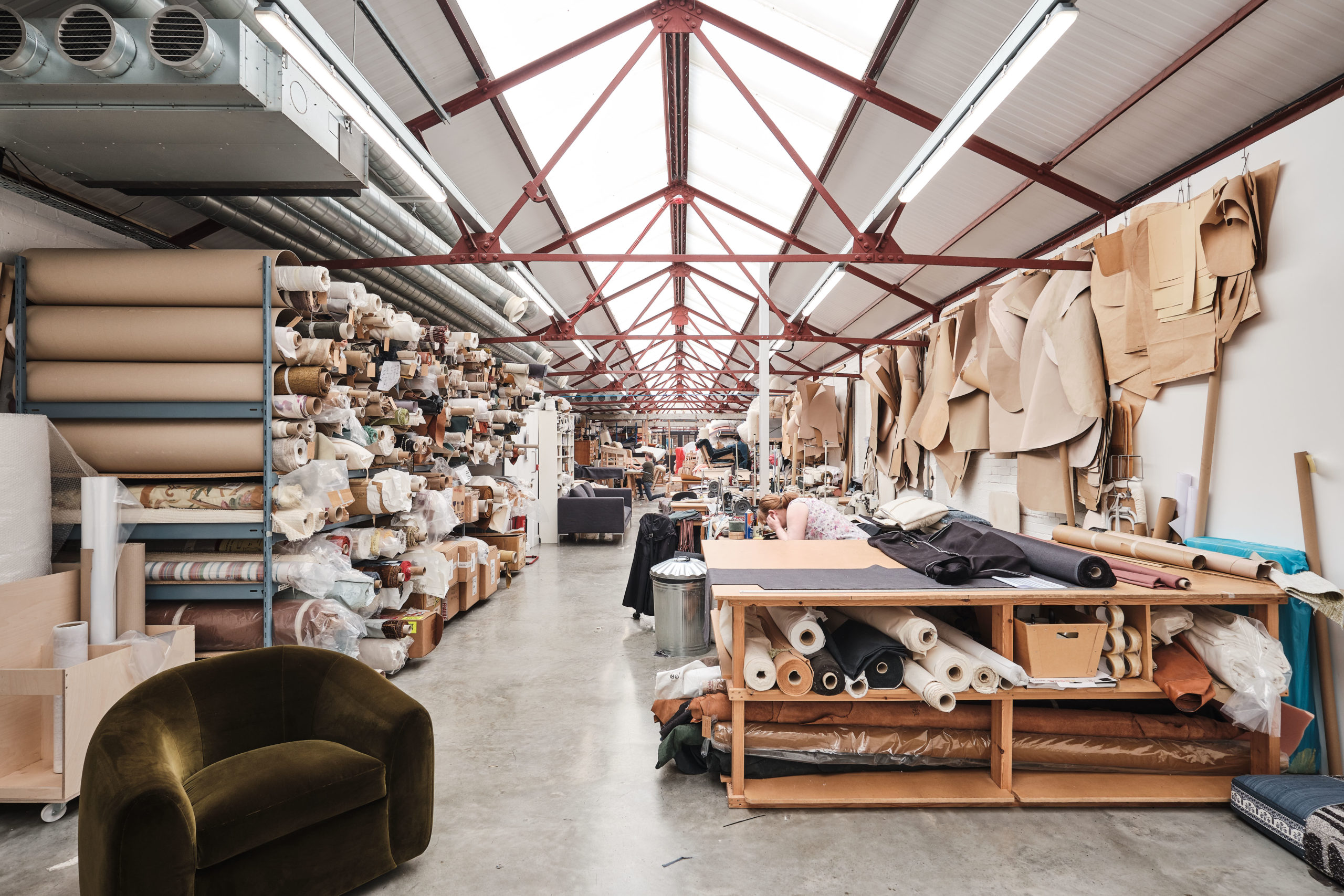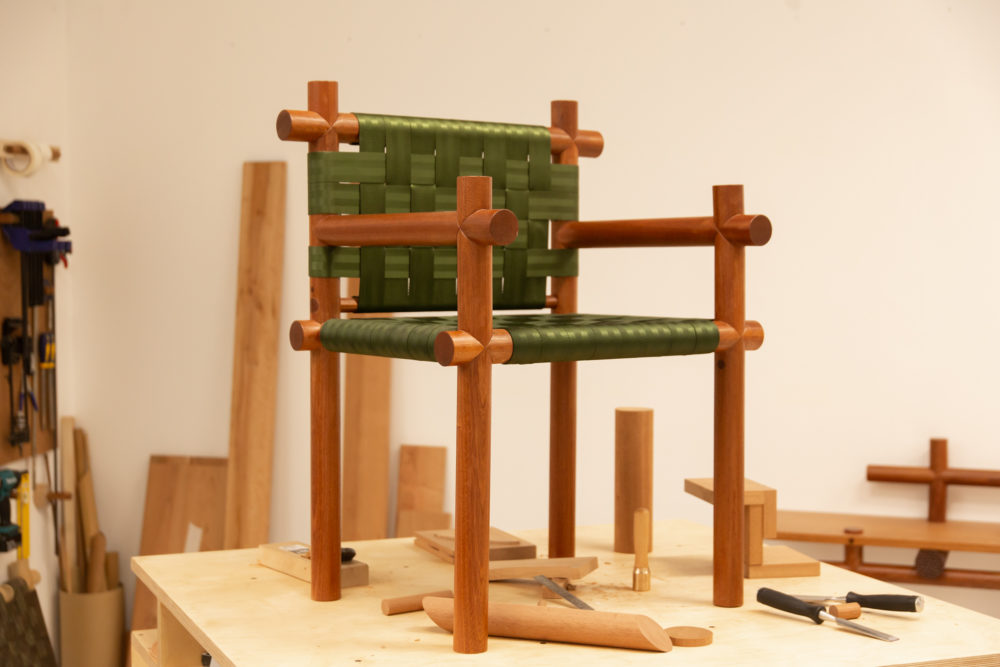Clayworks
With a profound respect for nature and an innate belief in sustainable building practices, the Cornwall-based Clayworks reimagines clay as an incredible interior wall finish. Its founders, Adam Weismann and Katy Bryce, have authored two books encompassing their research on cob, and clay and lime finishes, and have channeled their experience and expertise into developing Clayworks’ range of natural clay plasters for residential and commercial use. We chat to Adam and Katy about their journey, their inspirations and their thoughts on the future of sustainable, and beautiful, building.
Katy and I met while working in an organic farm shop in London. We moved to Cornwall (where Katy’s family lives) with a commitment to a natural and sustainable lifestyle, and developed an interest in natural building materials. We were deeply influenced by a book called ‘Shelter’, a slightly unconventionally presented book that explores the craftsmanship and vernacular architecture of age-old traditions and cultures.
Shelter details natural building from around the world in a beautiful way and completely influenced us in terms of inspiration. The book gave us very creative feelings, with its stories of builders throughout the ages taking inspiration from nature. It is both organised and disorganised at the same time – like nature.
We started to explore the use of natural materials in architecture and earth as a medium to foster the balance in a building that is healthy for both the environment and the user, as well as being beautiful in its design, structure, technique and use of materials.
In 2002 we established Cob in Cornwall and developed a fascination (maybe an obsession) with the beauty, performance and aesthetic qualities of clay as an interior surface finish. Our main lesson was to learn to trust completely in existing, readily available clays and other natural resources, and to make more out of them, instead of developing new materials and techniques for construction. While looking for integrity and performance foremost, we see the beauty and capacity of natural materials to affect the way we experience the spaces we inhabit, and to help provide the most intelligent solutions possible in a world facing many problems.
Researching for our two books gave us the opportunity to study and learn from master plasterers around the world. Building with Cob was published in 2006, and Clay and Lime Finishes in 2008.
Pushing hard at the conventional boundaries of techniques with clay, building on old knowledge in earth architecture, while making use of modern science and testing facilities, our focus became concentrated on creating and delivering natural plasters of the finest quality that speak honestly about the beauty and functionality of raw materials. This culture of learning, discovery and experimentation continues after we launched our own range of natural clay plasters in 2010, and our vision is to play a significant role in the re-imagination of clay as the interior wall finish of the future.
We travelled to America, Japan, Morocco, Europe and the USA, and were honoured to receive a travel scholarship from HRH Prince of Wales (Princes Foundation) towards the research for our second book. In Morocco we were honoured to train with master plasterers for two months. We also trained with master artisan plasterers throughout the USA, where we also trained in natural building. Clay plasters have a long tradition in Japan and we learned a lot about the traditional science of clay plasters, knowledge that is behind the continued research and development of our materials. Japanese ceramics, art and design continue to be a huge influence.
Discovering the work of Ethiopian architect Hassan Fathy has had a profound impact on the direction of our work. His book is permanently to hand on my desk, influencing the innovation of new colours and textures. His mindset, his attempts to show we can all live a more wholly sustainable lifestyle with a more participatory approach to architecture – long before those ideas took hold – is hugely influential and was transformational.
Fathy was a noted Egyptian architect who pioneered appropriate technology for building in Egypt, especially working to re-establish the use of earthen building materials and traditional architectural techniques as opposed to western building designs and materials. He showed that the best approach to more responsible building is not new technology, but appropriate ‘technology’. He devoted his career to rediscovering the lost and forgotten forms of traditional Arab structures, which were created by sand, history, wind and shadow.
Considered a poet of raw earth, Fathy showed a lifelong commitment and passion to advocating the return of earth architecture, embracing traditional, vernacular forms, techniques and materials and promoted their use as part of a campaign to improve the conditions of Egypt’s rural poor.
Fathy wished to bring back an earlier time when one was able to build without incurring debt, by advocating a system based on cooperative communal builders, local craftsmen and the use of sustainable, natural materials.
The beauty of clay, the opportunities to create so many unique aesthetics, combined with the exceptional sustainability, health and high performance credentials of raw earth are a unique combination of qualities. Only wood compares.
Natural materials, such as 100% natural clay plasters, make every place special, unique and multi-sensorial. When we collaborate with designers looking for custom wall finishes, we no longer get briefs around aesthetics alone. Instead, a brief will be the ideas and thoughts around sustainability, health and sensorial triggers that stand out from the crowd. Combined, these are now vital ingredients for spaces and projects to look and feel more special.
Clayworks Clay Plasters fire all the senses. The absolute rawness and the natural textural and colour imperfections heighten the senses and the emotional connection with that space. Then it feels luxurious. Luxury is no longer a look or an aesthetic but much more a feeling that can only be achieved by raw materials such as clay and straw, wood, wool, sisal, and stone.
Essential. We like to grow our own food, wild swim and be immersed in a natural environment.
It is vital to extol the organic, naturally imperfect beauty of all that surrounds us, encouraging us to foster a deeper connection with Nature and ourselves. All of our employees have a deep connection with the land and seascape.
Cornwall has a very long history with clay – both commercial production and ceramics. The county is known for being at the forefront of the new clean tech revolution and we are proud to be part of that movement.
Far more use of natural building materials, retrofits, repurposing buildings. Architects, building engineers are not taught about earthen materials at university and we are responding to this lack of knowledge – and desire to plug the gap – by collating more and more data and certification for our products and sharing it with specifiers around the world via Continuing Professional Development seminars.
That the materials are inconsistent in quality and lacking in a diversity of colour.
Walmer Yard by Peter Salter. The process of working with the architects was both fascinating and inspiring. Salter is an internationally acclaimed teacher and architectural designer. The design and construction – seven years in the making – involved painstaking experimentation with materials and techniques, exacting craftsmanship and successful compliance with regulations for non-standard approaches. Walmer Yard was so ground-breaking with its unconventional use of materiality that it is now open for private tours and events.
This was also one of our favourite projects. Simon has such depth and passion for his work, which is a real joy to be exposed to. This was the first project that we ever did with Simon and we knew that there were some exciting synergies. We now work with him on many of his projects and collaborate in different ways. We share an interest in ‘sensory architecture’ and how natural materials can help make a space feel inviting and peaceful.
“Throw open your windows and let the scenery of clouds and sky enter your room.” — Yosa Buson
A place to be at peace and close to nature.
Anything that involves vegetables from the garden.
It’s a very important ritual for us. We use flowers from the hedgerows and a stone from the beach.
Books on Middle Eastern architecture and building, Japanese design and ceramics journals. We love ceramics galleries and sculpture gardens, as well as travelling to deeply inspirational natural landscapes such as the geological formations in the South West United States.
Collaborating with the Egyptian architect Hassan Fathy. He is sadly not with us anymore but to have been a student of his would have been a dream. He created such simple and inventive solutions with natural materials. We have been searching for his magnificent watercolours that he did of his projects but have yet to find them.
Very exciting. We are engrossed in research and development: Focused on creating new materials, improving current ones and on continually working to make the overall business better. And, we are exploring ways to make 100% natural clay plasters available to more people. We also have one or two new creative ideas up our sleeves – watch this space.

